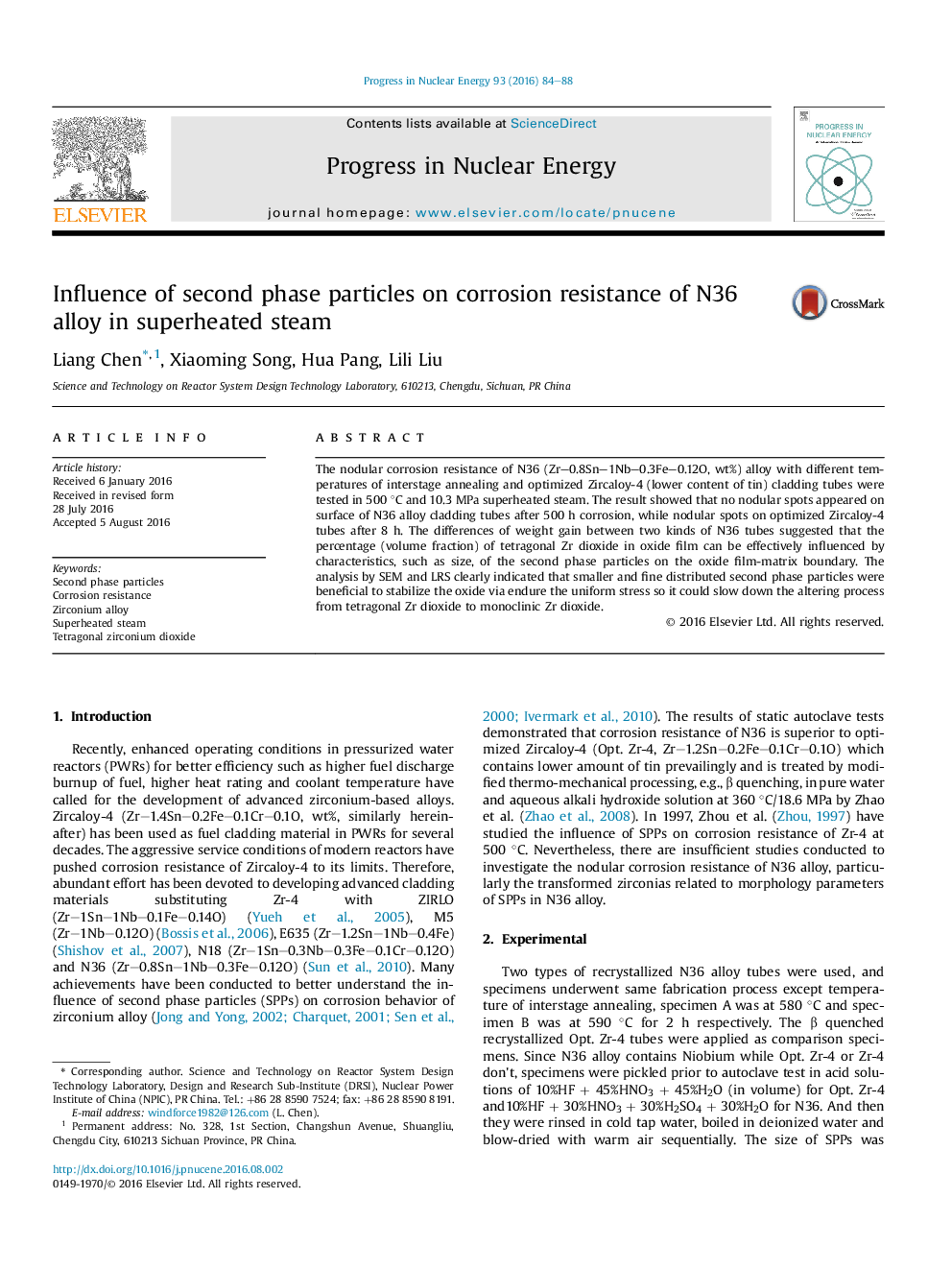| Article ID | Journal | Published Year | Pages | File Type |
|---|---|---|---|---|
| 8084689 | Progress in Nuclear Energy | 2016 | 5 Pages |
Abstract
The nodular corrosion resistance of N36 (Zr-0.8Sn-1Nb-0.3Fe-0.12O, wt%) alloy with different temperatures of interstage annealing and optimized Zircaloy-4 (lower content of tin) cladding tubes were tested in 500 °C and 10.3 MPa superheated steam. The result showed that no nodular spots appeared on surface of N36 alloy cladding tubes after 500 h corrosion, while nodular spots on optimized Zircaloy-4 tubes after 8 h. The differences of weight gain between two kinds of N36 tubes suggested that the percentage (volume fraction) of tetragonal Zr dioxide in oxide film can be effectively influenced by characteristics, such as size, of the second phase particles on the oxide film-matrix boundary. The analysis by SEM and LRS clearly indicated that smaller and fine distributed second phase particles were beneficial to stabilize the oxide via endure the uniform stress so it could slow down the altering process from tetragonal Zr dioxide to monoclinic Zr dioxide.
Related Topics
Physical Sciences and Engineering
Energy
Energy Engineering and Power Technology
Authors
Liang Chen, Xiaoming Song, Hua Pang, Lili Liu,
